|
Street Names
|
|
|
|
|
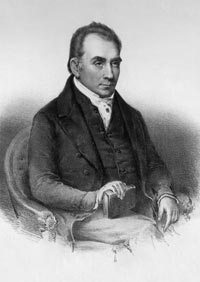
|
|
Robert Baldwin
|
|
|
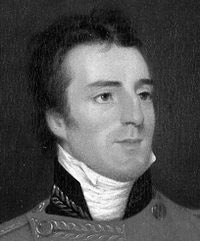
|
|
Duke of Wellington
|
|
|
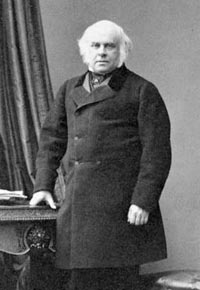
|
|
James Bruce 8th Lord Elgin
|
|
|
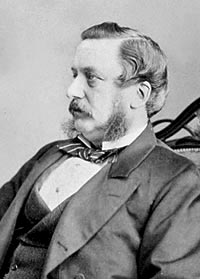
|
|
Frederick W Cumberland |
|
|
|
|
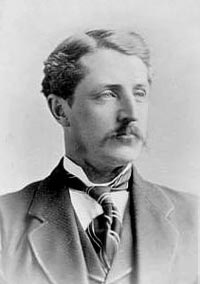
|
|
Arthur T H Williams
|
|
|
|
|
|
|
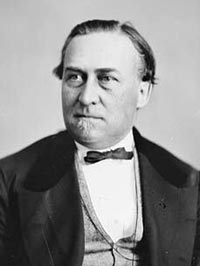
|
|
Hector-Louis Langevin
|
|
Seems more likely that Hector Street was named for
Hector-Louis Langevin, former Postmaster General, who, as
Minister of Public Works, laid the cornerstone of the Port
Hope Post Office building in 1883.
|
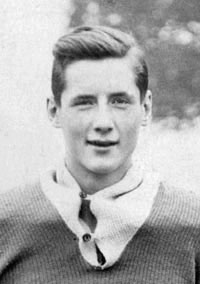
|
|
Alfred Keith Long 1913-43
|
|
|
|
|
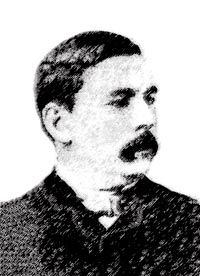
|
|
Joseph Medlicott Scriven
|
|
|
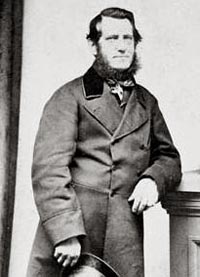
|
|
Sidney Smith c1860
|
|
|
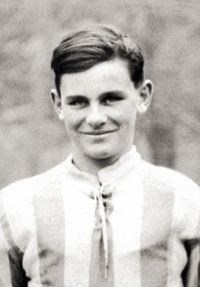
|
|
F E 'Frank' Southby 1913-44
|
|
|
compiled
by Harold Reeve
THE STREETS OF PORT HOPE AND HOW THEY WERE NAMED
The streets of Port Hope have, in general, been named to commemorate individuals who in some way contributed to the development
of the town or province. Some of the streets were named when the town was first laid out, shortly after 1800, and others as the town developed.
The object, commemoration of these people, has in many cases been lost in the dim past. It is therefore thought to be worthwhile to try to
bring back to memory the people after whom the streets were named.
The town as organized in 1850, when the Municipal Act was passed, included the original town plot and three subdivisions which were
added later. Since there is an association of names within each subdivision, each of them is treated separately in this series of articles.
The original town plot consisted of Lots 5, 6 and 7 in the first and broken front concessions of the Township of Hope; the College Subdivision
was Lot 4; the Ridout Subdivision was Lot 8 and the Williams Subdivision was the east half of Lot 9.
ORIGINAL TOWN PLOT
The original Town Plot, or that portion which is the central part of the town, extended from Hope Street on the east to a line midway between
Church and Julia Streets on the west, and from the Lake to the Marsh Road. This comprised Lots 5, 6 and 7 of the first and Broken Front
Concessions and was granted to Elias Smith and Jonathan Walton in 1797 with the understanding that they erect a grist mill and a saw mill
on the Ganaraska. The mills were in operation in 1799.
In 1815, by agreement, the land was divided between Smith and Walton, each giving the other quit claim deeds for his portion. The land was
surveyed into 91 plots of various shapes, because of the contour of the land. As settlement progressed, the plots were divided into town lots.
At the death of John David Smith, son of Elias, he stipulated in his will that the remainder of the Smith land be surveyed into town lots and divided among his heirs.
The names given the streets in the original Town Plot are mostly of local origin and are, therefore, of special interest.
ARMOUR - After Shaw Armour, who subdivided this land in 1819. He was the father of the Rev Samuel Armour and Grandfather of Robert Armour, who was elected to the Port Hope
Council in 1849 and later appointed Registrar for Durham at Bowmanvllle.
John Douglas Armour 1830-1903, another grandson, was called to the bar in 1853 and
became a law partner of Sidney Smith at Cobourg. He became Chief Justice of the Supreme Court of Canada in 1902.
AUGUSTA - After Augusta L Smith, the second wife of John David Smith. Legend has it that this was the road used in the first years of settlement. On the map of 1853, Augusta Street is shown
extending to Victoria Street, but the town minutes of l85l, when the right angle turns were put in at Thomas Street, state that it connects with Sherbourne Street. Facing the
west end of Augusta is town Plot 66, containing 27 3/4 acres. This was bought in 1823 by the eccentric auctioneer, T Orton, and the hill was long known as Orton's Mountain.
BALDWIN - After Dr William Warren
Baldwin, who bought Town Plot 91, containing 9 1/2 acres in 1818 for $2000. He came to Canada in 1798 and practiced medicine in Toronto.
He later went into legal practice. He was a member of the Legislative Council. He died in 1844. His son,
Robert
Baldwin, was the author of the Baldwin Act,which gave municipalities local government in 1850.
Robert Baldwin was in law practice with his father, and at his death in 1858 was reputed to be worth a million dollars, a considerable portion of which had been inherited
from the Hon Peter Russell. Daniel Sullivan married Barbara Baldwin, sister of W W Baldwin, before coming to Canada. Of their daughters, R Baldwin married one,
and T G Ridout another. Sullivan Street is named after their son, Judge Sullivan.
BARRETT - After William Barrett, who came to Port Hope in 1831. On this street they had a mill and also supplied power for several satellite industries. The Barretts, father and son,
were the builders of Barrett's Terrace, and the octagonal house on Martha Street was their home.
BEAMISH - After Frank Beamish, who erected a flour mill and a plaster mill in the 1850s on what became the old File Factory pond.
BEDFORD - Jonathan Bedford, with his wife and six children, settled at Dale in 1797. Stephen, Ephriam, Jonathan and David were in the Durham militia during the war of 1812.
Luke, a grandson of Jonathan, Sr, was active in the town's affairs in the 1840s and 50's, and it was after him that the street was named.
McCAUL - In 1838 the Rev J McCaul was appointed principal of Upper Canada College. In 1849 he became president of the University of Toronto and in 1853, Vice Chancellor.
NELSON - Horatio Nelson who joined the navy at the age of twelve and rose to be Admiral, was the greatest of Britain's naval heroes. At Trafalgar with 27 ships he engaged
French and Spanish ships and in a decisive victory captured 20 prizes.
ORCHARD - This is one of the newer streets and is named after Jack Box's orchard, through which it ran.
OXFORD - After the university of which many of the professors of Toronto University were graduates.
WALNUT - Probably named for walnut trees present in this area in the early days.
WELLINGTON - After the Duke of Wellington, who crushed Napoleon at the Battle of Waterloo. He was Commander-in-Chief of the British Army, and so of the Regulars who were
stationed in Canada, from 1842 until his death in 1852.
COLLEGE SUBDIVISION
The College Subdivision contains about 245 acres and extends from the Lake to Molson Street and from King Street on the west to Nelson on the east.
At the incorporation of the Town in l834, this lot, # 4, and lot
8, the Ridout lot, were added to the original town plot.
Lot 4, the College Subdivision, was Clergy Reserve. It was given to King's College in 1828, with the intent that the rent or sale would contribute to the support of the
College at Toronto. It was offered for sale in 1849 at $8 an acre. John David Smith, who had been renting it, had first chance to buy it. He was nearing the end of his life
and did not take up the offer. The University of Toronto bought it and soon subdivided it.
The street names given by the University have no local significance, but in the opinion of the University were named after men of importance.
Lot 3
ROSE GLEN ROAD - 'Rose Glen' was the home of the Misses Philip. It is only of late years that the name has been used for the road, formerly known as the 'Tuck Road'.
TUCK ROAD - The road between Lots 2 and 3. The Tuck Shop where the TCS boys could buy ice cream, water ice, candies and other 'goodies' was on this road and run by the Misses
Philip in part of their house.
Lot 4
ALFRED - After Alfred, Lord Tennyson, 1809-1892. The poem 'In Memoriam', which he began in 1833, was finished in 1850. In this same year be was appointed Poet Laureate of Great Britain.
BRUNSWICK - J W Burtt, of Cobourg Lumber Company, who built this newer section, came from New Brunswick and named the street for the province.
CLOVELLY - Named after Clovelly, England, the home town of Mrs Burtt.
COLLEGE - After King's College of Toronto. This was college land from 1828. The street was named many years before TCS was founded.
CROFT - Henry Holmes Croft came to Canada in 1842 when he was appointed to the Chair of Chemistry of King's College at Toronto. He became Vice Chancellor of the College in 1849.
He did much to advance agricultural chemistry in Canada, also much to make this local college a national University.
DEBLAQUIRE - After the Hon Peter Boyle de Blaquire. He served on the Bounty under Captain Bligh. He came to Canada in 1837. In 1838 he had a seat in the Legislature. He was appointed
Chancellor of the University of Toronto and was also a member of the Anglican Synod. He died in 1860.
ELGIN - After Lord
Elgin, Governor-General of Canada from 1846-1654. He married Augusta, daughter of Lord Durham. He was present at the passage of the controversial Rebellion
Losses Bill. He resigned as a result of the riots that followed the bill's passage, but was asked to remain as Governor-General, which he did.
HELM - After the Helm family. John Helm came to Port Hope in 1849 and established a foundry and machine shop. At his death he gave $20,000 to help build a hospital
in Port Hope.
Succeeding generations were in business in the Town for over a hundred years.
HOPE - The division line between Lots 4 and 5. In 1819 it was decided that the road leading from the Cavan (Rice Lake) Road was 'too muddy, crooked and inconvenient'. Hope Street
was opened to replace the old road. The traveller from the north could then get into town by way of Ward Street. At this time the land east of Hope Street was Hope Township,
so an obvious name for this boundary road was Hope.
MITCHELL - After the proprietors of Mitchell's Gardens (later Black's Gardens). One brother grew flowers, the other vegetables.
MOLSON - After the Molson family of Montreal, who in the 1850s owned the flour, saw, stave, picket and lath mills at the west end of this street. The house which stands at the northeast
corner of Hope and Molson was once a branch of Molson's Bank. One of the Molson brothers lived in Port Hope for a few years.
RIDOUT SUBDIVISION
Thomas Ridout, Sr was born at Sherbourne, Dorsetshire, England in 1754, and went to Maryland in 1774. He was taken prisoner by the Shawnee Indians of the Ohio its 1787
and was liberated at Detroit. He was Surveyor-General of Upper Canada, a member of the Legislative Council and a member of the Board of Education.
His son, Thomas Gibbs
Ridout, with whom we are directly concerned, was born near Sorel in 1792. He moved with his parents to York. At the age of 19 he was appointed Deputy
Assistant Commissary General. He resigned to become cashier of the Bank of Upper Canada, a position he held for the remainder of his business life.
T G Ridout was intimate with members of the Government and was connected by marriage with some of the aristocratic families of Toronto. His schoolmates at Strachan's
School at Kingston and Cornwall were Baldwins,
Sullivans and others.
The Ridout Subdivision was lot 8 in the First and Broken Front Concessions of the Hope Township Survey. It ran from the lake to the Marsh Road and Jocelyn Street, and from a
line on the east midway between Julia and Church Streets to Victoria on the west. This lot was Clergy Reserve transferred to King's College in1828 and registered to Thomas
Gibbs Ridout in 1832. He transferred the lot to the Bank of Upper Canada and bought it back in 1844 for $7326. It had become part of the Town in 1834 and subdivision was begun in 1847.
The Port Hope Commercial Advertiser in 1849 announced that lots on Bruton Street and Bramley were for sale.
By 1853 the lots on both sides of Charles Street and Ridout Street were nearly all built upon, with a few houses on Bruton and Sullivan Streets.
The association of street names in this subdivision has to do with connections with the Ridouts by marriage, estate names that have origins in Toronto and England, and family names.
ALEXANDRA - After the wife of King Edward Vll. They were married ib 1863. Misspelled on recent maps as Alexandria
and Alexander.
BRAMLEY - After Matilda Ann Bramley, the second wife of T G Ridout whom he married In 1834.
BRUTON - Named after Bruton, Somersetshire, England. Thomas Gibbs Ridout, when he was 20, visited 'Aunt Ward' in Bruton and was much taken with her. Both Bruton and Bramley
Streets are advertised in 1849 as being opened and the lots for sale.
CHARLES - After Charles Ridout, a son of T G Ridout. He was Chairman of Finances and Assessment for the City of Toronto in 1848.
CUMBERLAND - After the architect, Frederick William Cumberland who married Wilmont Bramley,
a sister of the second Mrs Ridout. Cumberland designed St James Cathedral in Toronto and other important
buildings. He drew the plans for Port Hope Harbour in the 1850s when it
was enlarged to take the increased shipping expected with the completion of the Midland Railway.
DURHAM - After Lord Durham. This street may not have been named for the Lord Durham who was Governor-General of Canada and who died in 1840, but for his successor in the title.
George D'Arcy Boulton, who married Julia Ridout, was a relative of the Lord Durham of the 1850s. It was at this time that the street was named.
GOULD - After Norman Burr Gould who came to Port Hope in 1888. The Goulds had a store in town for 3 generations.
GREGORY - After Gregory Silver, a grandson of the developer, Irving Margles. Named in 1956.
HIGHLAND DRIVE - Called Beaver Street on the older maps, this street's name was changed to Highland Drive by a bylaw passed in 1955.
JULIA - After Juliana Ridout, daughter of T G Ridout. She may have preferred to be called Julia. She married George D'Arcy Boulton.
LITTLE HOPE - Not the way it sounds - as if the residents were doomed to perdition. The 'Little' was tacked on to avoid confusion with Hope Street in the east end of the Town.
On the map of 1853, the street is laid out but not named.
LYN CRESCENT -
After a daughter of the developer, Irving Margles. Named in 1956, when the area was developed for housing.
MADISON - The charter of the Port Hope Harbour and Wharf Co was granted in 1829 to James Madison Andrews as president and H H Meredith as treasurer.
Madison Street may have gotten its name from Andrews' middle name.
MARS - No positive solution has come to hand for the name of this street. In Seymour Township a number of army and ship's officers settled in the 1830s. One of these was named Mars.
There is a possibility that one of the Mars married a Ridout and the name was given to the street to honour the couple.
MOORE DRIVE - After Wilbur N Moore, who was mayor of Port Hope from 1949 to 1960.
PIDGEON HILL - After Richard Pidgeon, who lived on this street in 1870 and bought four acres and a house in 1888. The land was held in the Pidgeon name until 1945.
RIDOUT - After Thomas Gibbs Ridout who owned and subdivided this 200 acres. He was Deputy Provincial Master of the Masonic Lodge and laid the cornerstone of the Town Hall in 1851.
In 1851 the Council ordered that Walton and Ridout Streets be opened up, graded and gravelled from Pine to Victoria Streets. The gravel was to be 16 feet wide and six inches deep.
It was necessary that the traffic go over the gravel to work it into the earth to form a solid road. It was hard to pull loads through the gravel so the traffic used the sides. To frustrate
the teamsters, the Road Supervisor (Maurice Hay) was ordered to cut trees onVictoria Street and line the side of the road and so keep the traffic on the gravel.
SHERBOURNE - After Sherbourne of Dorsetshire, England, where Ridout, Sr was born and raised to a young man. The name was given to the Ridout estate in Toronto and also to the street on
which it was situated. The name was transferred from Toronto to the street in Port Hope by T G Ridout.
SILVER CRESCENT - After the son-in-law of the developer, Irving Margles.
STRACHAN - After Bishop Strachan who came to Canada in 1799. He taught Grammar School at Kingston, Cornwall and Toronto. The Ridouts, Robinsons, Baldwins and Sullivans and others
of Toronto were his pupils. He was ordained into the Anglican Church Ministry and in 1839, was created Bishop of Toronto. In 1818 he was appointed to the Legislative Council
and was a controversial figure in the Family Compact.
SULLIVAN - After Robert Baldwin Sullivan, a brother of T G Ridout's first wife. He was Provincial Secretary in Lord Elgin's Ministry; was appointed Judge in 1848 and died in 1853.
TRAFALGAR - Mrs Ridout sold 11 1/2 acres to Charles Seymour in 1869 for $3400. This changed the original Ridout survey. Seymour married one of J T Williams' daughters
and lived at Idalia. The street was named after the Battle of
Trafalgar in which Williams commanded HMS Surprise.
YEOVIL - In Somerset, England, just over the county border from Sherbourne in Dorset, and in the neighbourhood of the Ridout's home in England.
WILLIAMS SUBDIVISION
The Williams Subdivision became part of Port Hope in 1849 and is the east half of Lot 9, which is west of Victoria Street.
The Lot was granted in 1804 to Mrs Ann Ridout, the mother of Thomas Gibbs
Ridout. Her husband, Thomas, was Surveyor-General of Upper Canada with the
result that there was a Ridout Lot of 200 acres in many towns in the Province.
Commander John Tucker Williams, Royal Navy, retired, had fought at Trafalgar under Nelson and on Lake Ontario in 1812 under Sir James Yeo.
(The Tucker name is from the family of Tucker of Tremanton Castle, St Stephens, Cornwall). He bought Lot 9 from the estate of Mrs Ridout in 1823 for $1000 and
built his home, Penryn, at the south end of Victoria Street and to the west. This is not to be confused with the Penryn Park house that was built by his son,
Col Arthur T H
Williams, in 1859
He became the first Mayor of Port Hope when the local municipal government was changed in 1850. He was also the first member for Durham in the Union Parliament in 1841.
Col A T H Williams, his son, and William Fraser, his son-in-law, who had married Augusta Williams, were active in dividing this property. The street names are
mostly family names. At the north end of the subdivision is a modern subdivision with names given by the promoters, Long Bros and Irving Margles.
The Williams named their boys with working names such as Arthur, Charles, and the second and third names were after old titled families in England to whom the Williams were related.
ARTHUR - After Col Arthur T H Willliams,1837-1885, the hero of Batoche, whose monument stands in the Town Square. His father was John Tucker Williams and his mother,
Sarah Ward, daughter of Thomas Ward of Ward Street. He represented Durham in the Legislature in 1867 and in 1875. He was elected the Durham representative
in the Dominion Government. 'He was intimately associated with everything that for nearly a quarter of a century affected the welfare of the Town.'
ASTON - This street is on the map of 1878 but was eliminated by the new subdivision. It was named after Charles Hervey Aston Williams, brother of Col Williams. Lord Hervey,
the Earl of Bristol, married Catherine, daughter of Sir Thomas Aston of Aston Hall, Chester. Their grandson was Henry Hervey Aston who died in 1798.
BLOOMSGROVE AVENUE - This street was surveyed by Stewart in 1870 for Robertson and Mulligan. It has been suggested that this name was a combination of the names of the Robertson and Mulligan homes.
BROGDEN'S LANE - After William Brogden, who was here in 1822. He was on the Town Board of Police in 1839. He lived on the south side of Walton Street east of the present railway tracks.
He was a carpenter and built the first Presbyterian Church in 1831 on Church Street. In 1826 he built a block of stores on the north side of Walton Street and east of Ontario Street on what
was then called 'The Frog Pond'. In 1851 a part of Brogden's Lane was laid out and dedicated by the representatives of the late J D Smith, 'that the same shall be and form a public street.'
BROWN - This street was given by John Brown so that those attending the Methodist Church could have easier access. The church at that time was on the opposite side of the street from
the present church. According to the town minutes, Brown Street was to be made passable for wagons in 1837.
John Brown came to Port Hope from Ireland in 1818 and spent the rest of his life here. He was soon running a store, distillery, blacksmith shop, flour and grist mills. He was president and
principal owner of the Harbour Company, and was frequently elected to the Board of Police (the council of that time). He was Durham's MP in 1830 and 1835. With his feuds and shenanigans
he made Port Hope an interesting place in which to live; with his enterprise he did much to lift the village from its primitive state.
BRINLEY - The third name of Henry Jocelyn Brinley Williams, brother of Col Williams. George Brinley was Commissioner-General of His Majesty's forces in Canada from 1799 to 1809.
This street was done away with when the new subdivision was laid out.
CALDWELL - After John Caldwell, who ran the Caldwell House at the corner of John and Walton Streets in 1803. James and Joseph Caldwell's names appear on the petition to Governor
Maitland in 1819 to make Port Hope a port of entry. Lot 10 (Wildwood) was known as the Caldwell farm in 1810. At the peak of the schooner days there were 26 sailors living on Caldwell Street.
CAROLINE - This land was sold by Elias Smith to Mary Wilkins in 1816. In 1835 it was transferred to the Hon Robert C Wilkins. It may have been named by the Wilkins. This street was not
developed and was used for farming or garden land. In the 1930s the Town took over the land for unpaid taxes. The Council decided to sell the lots for $10 each in the hope that houses
would be built and the Town would get some taxes.
CATHARINE - After Catharine Miller, the wife of Elias Smith, Sr. Born in King's County, New York State in 1764 and died in Port Hope in 1826.
CAVAN - Opened in 1825. The surveyor said "This road will better
convenience the back settlers coming to the Village of Port
Hope". The 'Cavan' is given as a continuance of the Cavan
Road (The Rice Lake Road).
CHESTNUT - Likely after sweet chestnut trees that were present in the early I800s but later killed throughout Ontario by blight.
CHOATE - After Jacob Choate, who operated the hotel at the corner of Walton and John Streets in 1817 and had then bought 400 acres just north of the village for
which he was to pay $1400 within five years. The Choates took an active part in the affairs of the district for many years.
CHURCH - This street led to the Presbyterian Church built in 1831. It was sometimes impassable and the church-goers had to circle to the west to get to worship.
This wooden church was replaced with one of brick. The double house on Baldwin Street facing the end of Church
Street is part of the brick church.
CRAIG - After William Craig's Tannery, which manufactured as many as 10,000 sheep skins into Morocco leather in one year.
CRANBERRY ROAD - The north end of Victoria Street that led to the Cranberry Marsh. A petition in 1811 asked 'that this road be opened between Lots 8 and 9 from the Front Road to the Third Consession.
DORSET - On the 1853 plan this street is called the Base Line, meaning the first or base from which the Township was surveyed. In 1859 Mrs Ridout sold a lot on the street and Dorset
seemed to be is use then. Sherbourne, Dorset, England was the home of Thomas Ridout, Sr before he came to Canada. This is probably the source of the name.
ELIAS - After Elias Smith, one of the original grantees of the Town Plot,
ELIZABETH - After Elizabeth Thum, sister of Allen Harris and wife of Lee Thum who had a blacksmith shop on Queen Street and his home near the south end of John in 1825.
ELLEN - (See Margaret).
FRASER - After William Fraser who Married Augusta Williams. He was elected mayor of Port Hope
in 1859. With Col Williams he was active in subdividing the Williams land west of Victoria. In 1889 he entertained Sir John A MacDonald in his home,
Dunain, after the unveiling of the monument to Col Williams. Born in Inverness, Scotland, died in 1889.
FREEMAN DRIVE - After 'Shorty Freeman' who was a popular manager of the Port Hope branch of the Royal Bank.
GIFFORD - After Carlton Gifford who was active in the Town's affairs. In 1835, he was fined five shillings for carrying a gun on Sunday. As Pathmaster of the Town in 1835, he was the cause of having
a number fined for non-performance of road duties. They had their revenge when he himself was caught for a second time carrying a gun on Sunday and was fined twenty shillings.
HAGERMAN - Isaac Hagerman was in the Durham Militia of 1812. Nicholas Hagerman laid much of the town's plank sidewalks in the 20 years from 1834 to 1854.
James Hagerman received land from Nicholas in 1853. Chris Hagerman was a councillor in 1879. The honour for the street name goes to Nicholas.
Incidentally, Walton Street had plank walks in 1834 and shortly after that date an order by the Council prohibited wheelbarrows or hand sleighs from being used on the walks.
After 1850, there was a rapid expansion of planked sidewalks. King, Ridout, Church and John Streets were planked in 1851.
HARCOURT - This street was named sometime before 1851. No Harcourt family has been found in the Town records before 1867. In Hope Township on Lot 8, Concession 7, J T Williams
owned an adjoining farm. When hunting, fishing or on inspection of the farm, he stayed at the Harcourt's. Williams owned a number of lots on Harcourt street and it is assumed that it
was named in honour of either John or George Harcourt. George came to town in l867 and worked the land from Harcourt Street to Bloomsgrove Avenue. He bought the Harcourt house
on Ward Street in 1874.
HARRIS - Allen Harris was a witness to John David Smith's will and there is a possibility that he was related to the Smiths. He was a contractor and in 1848 built the bridge over the
Ganaraska on Walton Street for about $1300. He and his sister, Elizabeth Thum, owned land on this street in 1825.
HAY - Maurice Hay owned land adjoining this street in 1853. He was president of the Fire Fighters Company in 1848 and was the street surveyor in 1849. He died in 1866.
HAYWARD - After Paul Hayward who had a wool carding business in the early days of the village. His house was on John Street and the woollen mill on Queen Street. One account
lists his presence here in 1803. He was Pathmaster in 1822. The Council of 1851 ordered that the hill at the south end of Victoria Street be improved and a road built to connect with the
new street known as Hayward.
HECTOR -
This street is Midland Street on the map of 1878. It led to the Midland Station. In 1883, the Grand
Trunk took over the Midland Railway and soon did away with the station but the name of the street probably held on far some years. The derivation of Hector is left to conjecture.
There were lively celebrations upon the return of Hector Reed from the Boer War In 1902. C J Baird, who was postmaster at that time was a relative of Hector Reed; it is possible
that this street beside the Old Post Office was named in honour of Hector Reed.
HENEAGE -
The third name of Col Arthur Trefusis Heneage Williams. A Lord Heneage died at Vancouver in 1967. He was the Chaplain to the Anglican Bishop of British Columbia
and a member of a very ancient English Family whose seat was Hainton Hall, Lincolnshire.
HERVEY - After Charles Hervey Aston Williams (see Aston Street). Charles married a daughter of H H Meredith, a prominent Port Hope merchant.
(See the Meredith-Williams case in 'Tales of Old Port Hope', pg 55).
HILL - The name is self-explanatory.
HILLCREST DRIVE - A newer street that runs through the old Fair Grounds. Named by the Long Bros.
HOWARD - After Howard Meredith, son of Henry H Meredith, who bought most of the land on this street from 1849 to 1861. The land was transferred to his son in 1878.
JANE - After Mrs Freeman, wife of the banker.
JOCELYN - The second name of Henry Jocelyn Brinley Williams, 1839-1904 - brother of Col Williams, named after Sir Robert Jocelyn, the Earl of Roden.
This is a very old English family. A Sir Rolph Jocelyn was Mayor of London in 1464.
JOHN - After John David Smith, youngest son of Elias, Sr. He built the Bluestone House in 1834 and was the most important man in the Town. He died in 1849.
In his will he instructed the executors to divide the remaining Smith holdings into town lots and to divide them among his heirs.
KEITH PLACE - After Keith Long, who lost his life in the Second World War.
KING - After King George the Third. Mill, Queen, Walton and King are likely the first four streets of the Town.
LAKESHORE ROAD - The first through road in the district, built in 1800. It came along the present Lakeshore Road, down Walton Street and along Ward Street and was part of the York-Kingston Road.
LAVINIA - The ill-fated ship in which the Baldwins left Ireland in 1797. Three weeks out she was so battered by storms that they returned to England. The second attempt met with furious gales.
The children were tied to the ship and every man, regardless of his station, took turns at the pumps. They got to Falmouth, but barely made port when the Lavinia sank. Eventually,
after seven months, they got passage on the Grantham, a King's ship of twenty guns. This trip was uneventful and the Baldwins arrived safely and contributed much to the province.
This was likely an often-told story of the Baldwins and the name of the ship was given to the street to commemorate their two narrow escapes. Falmouth is in Cornwall and the
Williams were at Cornwall, so there is a possibility that the families met before coming to Canada.
MAITLAND - After Alexander Maitland, who held land in the early Town. This street is on the south side of the Ganaraska Hotel aud in 1850 ran as a narrow lane to Walton Street over what is now Ontario Street.
MARGARET, MARTHA and ELLEN - These are the streets in Town Plot 36. This was bought by Dennis Riordan from T Ward in 1824 for $500. A number of the lots were sold by I850.
The names are not those of any of Riordan's four daughters. It is assumed that the streets are named after his
granddaughters. Dennis Riordan came to Port Hope about 1820. He was tax-collector and bailiff in 1849.
MARSH - After the Marsh family who settled in the Township in 1795. James Sculthorpe, a grandson of Elias Smith, Sr, married a Marsh and developed parts of the town.
MARSH ROAD - The Second Concession line, now Jocelyn Street, named after the Cranberry Marsh through which it ran.
McKIBBON - After James McKibbon, who was treasurer of the Port Hope-Rice Lake Toll Road. He had a notice in the Commercial
Advertiser of 1849 that the right to collect the tolls for 1850 would be auctioned.
MERRITT - After Thomas R Merritt. In 1857 J S Smart, T Benson and T R Merritt bought
and subdivided Town Plot 66. One street was named Thomas after Benson and the other after Merritt.
MILL - This street led to the Smith mills, the first in the district. This was the location of several of the first business places and stores. In some very early records it
was called Creek Street.
NORTH - On the north side of the division that contained school and church. James North was constable of the Town in the l850s, but it is unlikely that the street was named
after him, unless someone with a sense of humour said "Let's call the parallel street South."
ONTARIO - The north end was opened in 1825 and was called the Lake Ontario Road. It joined Mill Street and provided a road to the lake. The opening of the
south end made a bridge necessary over the river and was the cause of a lively debate in Council in 1851 and the threat of a lawsuit.
PARK - A plot of land left as a park on the map of 1878 was bounded on the north by Dorset Street, on the west, by Catherine and on the south by Park Street.
PERCIVAL - After Charles Perclval, son of J T Williams and brother of Col Arthur T H Williams. He died quite young, in 1811.
PERCY - The land around this street was bought by John Tucker Williams in 1825 and held by the Williams family till 1866. Thousands of names have been checked for the
period 1800-1860 while writing this and there is only one Percy or Percival and he was a Williams.
PETER - After Peter Smith, the oldest son of Elias. This street was improved in 1848 to give a better connection with the Cobourg Toll Road being built by the Burnhams of Cobourg and Port Hope.
PINE - This is the line between Lots 6 and 7. It was aptly named for the pine forest that was present in this area.
PRINCESS - After Queen Charlotte, wife of King William IV. The street was named before King William came to the throne in 1830.
RALSTON DRIVE - After Brigadier-General Ralston, whose home 'Hill and Dale' was on Pine Street. He was active in the
46th Regiment. In the first World War he commanded artillery.
ROBERTSON - After James Robertson, 1793-1871, who came to Port Hope in 1819. His tannery and house were on this street. He was active on the Board of Police. He had a dispute with John Brown over the boundary line of stores
he was building on the south side of Walton Street. The walls put up during the day were pulled down by Brown at night. This problem was solved by Robertson patrolling the wall with a shotgun.
ROSEVEAR BLVD - This street, opened when the new Port Hope and District Hospital was built, was officially named in 1965 In honour of John M Rosevear, who served a number of years on the Port Hope Town Council.
ROSS - Presumably after the Ross family, which was prominent in 19th century Port Hope. John Ross, a business man of that town, was on the Harbour Commission of 1853.
He sold out and went to Australia in the 1850s at the time of the gold rush. Lewis Ross, another prominent merchant, ran for Parliament against Lt Col A T H Williams.
SCRIVEN - After Joseph
Scriven, a local preacher. A graduate of Trinity College, Dublin, he came here about 1850. He wrote the well-known hymn 'What a Friend We Have in Jesus'.
There is a monument to his memory in Rotary Park.
SCULTHORPE - After James Sculthorpe, grandson of Elias Smith, Sr. His mother, a widow with two sons, came in 1798 to live with the Smiths. He did considerable building in the Town,
much of which has been torn down and replaced with newer structures. The land in the area of this street came into his possesssion in 1825.
SEYMOUR - After Benjamin Seymour, who bought land here in 1853. He built the big house on Pine Street across from the Dr Hawkins School. He received Crown deeds to 1000
acres in the Township of Hope in 1826 and is said to have been in partnership with J T Williams in the lumber business. Emma Williams married Mr Seymour's son,
Charles and Col A T H Williams married his daughter. He was appointed Senator.
SHAW - After Shaw Armour, who subdivided Town Plot 18 in1819, and whose name appears on Town Plot 18 in transfers until 1870. (See
Armour in 'Original Town Plot')
SHORTT - After the Reverend Jonathan Shortt who conducted the services at St John's
church (now St Mark's) on King Street from 1836 to 1867. In 1833, J T Williams sold 36 acres just north of the Lakeshore Road for $720 to the Rev James Coghlan.
He was the St John's rector and he built and taught Grammar (High School subjects) in what is
now the Hutchings house. Shortt took over the school and church In 1836.
SHUTER - Sarah, a daughter of Elias Smith, Sr married John Shuter of Mill Hill, Middlesex, England. Sarah Shuter received the Crown deed for Lot 32, Concession 2, Hope in 1808.
There is no evidence that she lived here but it is highly probable. Elias Smith, Sr transferred 18 acres in the Bloomsgrove area and 2 acres on Ward Street to Sarah in 1816.
John and Sarah Shuter transferred this in 1842. Sarah died at Hacomb House, Mill Hill, Middlesex, England, in the 1800s. Shuter was a favourite given name of the Smiths,
appearing in at least four generations.
SMITH - After the Smith family, owners of most of the original Town Plot. The Smiths were notable for their outstanding services to the Town over a considerable time.
Elias, the original grantee of the Town Plot, sold his estate near New York at the beginning of the Revolutionary War for $23,000. His New York holdings that were seized by the State were valued in 1830 at a million dollars.
He served as captain of an independent company during the revolution and at
the close of the war became a merchant in Montreal.
Elias, 1736-1828, was the father of ten children. Of these Elias, Jr, John David and Susan Pother with her husband Philip, and their ten children, came to Port Hope in 1797.
Another daughter, Catherine Sculthorpe, a widow with two sons, came in 1798. Elias, Sr, came to Port Hope when he was 61. He died in his 92nd year and is buried in St Mark's Churchyard.
Peter, who came to Port Hope around 1795, looked after the Smith interests here until 1797. In a letter to the Hon, Peter Russell, Elias states that 'Peter has gone to Jamaica on business.' He died in Jamaica in June, 1799.
Elias, Jr 1776-1825, is buried in St Mark's churchyard. His widow 'Aunt Betsy' lived here for some years in a house near the present CNR station. She died in 1843.
John David inherited his father's holdings in Port Hope. He had a saw mill, a grist mill, a store, a distillery and houses. He gave ten acres of land for the harbour and built St Mark's Church. He was MP for Durham, 1824-27. He died in 1849.
The sons of John David were:
James Smith 1811-74, a lawyer in Port Hope, who, in 1848 and 1854, repesented Durham in the Legislature of United Canada, and for one term represented Victoria County. He served on the Town Board of Police in 1846.
John Shuter Smith, a lawyer who was MP for Durham in l857-61-64. He was appointed to the Court of Chancery in 1850. His home was 'Wildwood'.
Sidney Smith 1823-89 began the practice of law at Cobourg in 1844. He was elected member
of the Legislature for West Northumberland in 1854. He represented this riding three times, and a division of the Trent, composed of North Hastings, Lennox and Peterborough once.
He was appointed Postmaster-General in 1858.
Dr William Miller Smith 1815-1854 practiced medicine in Port Hope. His home was at the corner of William and King Streets. He was a member of the Town Council.
Elias Peter Smith the third Elias, 1807-1860 was the manager of the Bank of Upper Canada. He ran for Parliament but was defeated.
David Smith was a lumberman. He was appointed Postmaster at Oshawa.
Robert Charles Smith was also a lumberman.
John David Smith's other children were Mrs J B Hall, Mrs T C Clark, Mrs Wellington, Wallace W Smith and Joseph S Smith.
SOUTH - South and North Streets were bounderies of land on which were situated church and school.
SOUTHBY PLACE - After Frank Southby who lost his life in World War Two.
THOMAS - After Thomas Benson, who came to Port Hope in 1832. He laid out this street through strip of property he acquired in 1857 and so connected land on Augusta street with Walton Street.
TORONTO ROAD - Petitioned for by twelve ratepayers In 1811 and recommended by the surveyor that it 'start at the north-west corner of Lot 12 of Concession 2 and intersect the
Front Road at the south-west line of Lot 8, Concession 1'. After improvement in 1818 of Concession Road 3, it became Toronto Road.
TREFUSIS - The second name of Col Arthur Trefusis Heneage Williams, named for
Charles Rodolph Trefusis, the 19th Baron of Clinton.
WALKER - After George Walker, who had the hotel at the corner of John and Walton Streets in 1826. Jonathan Walker bought Town Plot 70 in 1825. This street, which was to run West of and parallel to Cavan Street, was never opened.
WALTON - After Jonathan Walton, a native of Pennsylvania, who was on the side of the British during the revolution. With Elias Smith he entered into a contract with the Government to
settle forty families in the Township of Hope. He was here but a short time before returning to Schenectady where he opened a store. He made several visits to Port Hope and yearly sent
a boat-load of supplies to trade with the residents of the Township. He gave the land for St Mark's Church in 1824 and in 1832 he presented the steeple bell to St Mark's.
WARD - After Thomas Ward, the first lawyer to the Newcastle District. He was appointed Registrar of Deeds in Port Hope
in 1808, was an officer in the Militia in 1812 and for a while was Judge of the County Court. He was Clerk of the Peace for the District until old age kept him from his duties. His home was on Lot 3,
east of the present Trinity College School. This was the east-west travelled road until nearly 1850, when the present Cobourg Road was built as a Toll Road.
WILLIAM - After King William IV, 1765-1837. He was king from 1830-37 but was still a prince when the street waa named. He was the third son of George III and uncle of Victoria, who succeeded him.
WRIGHT - After John and George Wright. Robert Wright sold land to the Midland Railway in 1882 and the Council decided to open this street in the same year, but it was not opened at least not its a full length.
YOUNG - James Young, in 1848 and John Young, in 1853 bought land on this street from J T Williams. There is a stained glass window dedicated to John Young, who died in 1876 and his wife who
died in 1858. The name of this street is frequently misspelled 'Yonge'.
SOURCES:
Ontario Archives
Board of Police and Town Minutes
East Durham Registry Office
Morgan's Celebrated Canadians
The Oxford Encyclopedia of Canadian History
Burke's Peerage
|
|
You can use the form below to make a comment on this article.
A name is required, an email address is optional. Email addresses will not be revealed.
|
|